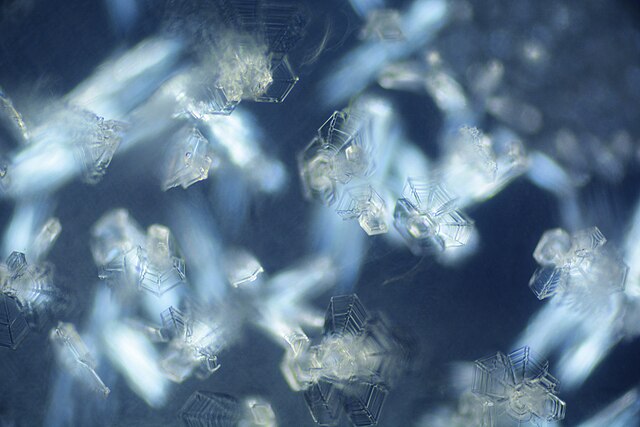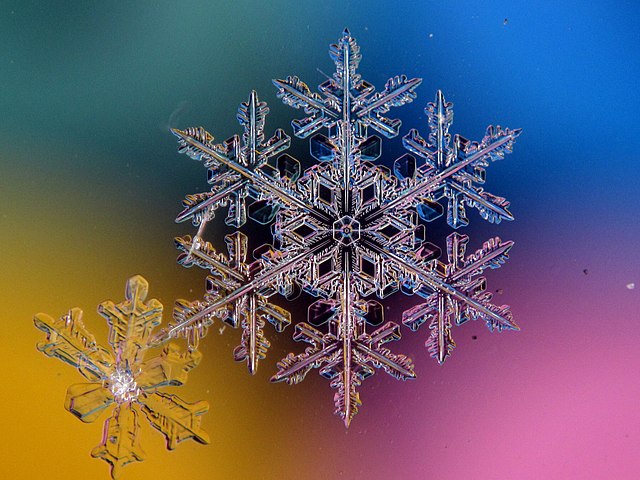Ice crystals are solid ice in symmetrical shapes including hexagonal columns, hexagonal plates, and dendritic crystals. Ice crystals are responsible for various atmospheric optic displays and cloud formations.
A close-up of growing ice crystals displaying typical hexagonal symmetry.
Further freezing of water on an ice crystal produces snowflakes.
A halo created by light reflecting off of ice crystals in cirrus clouds. This specific halo is called a 46° halo.
Dendritic ice crystals imaged with a scanning electron microscope. The colors are computer generated.
Ice is water that is frozen into a solid state, typically forming at or below temperatures of 0 °C, 32 °F, or 273.15 K. As a naturally occurring crystalline inorganic solid with an ordered structure, ice is considered to be a mineral. Depending on the presence of impurities such as particles of soil or bubbles of air, it can appear transparent or a more or less opaque bluish-white color.
An ice block, photographed at the Duluth Canal Park in Minnesota
This iceberg can stay afloat in spite of its size because it is less dense than water
So-called feather ice on the plateau near Alta, Norway. The crystals form at temperatures below −30 °C (−22 °F) and contain a lot of trapped air, making them light enough to be supported by the thin branch
Frozen waterfall in southeast New York








